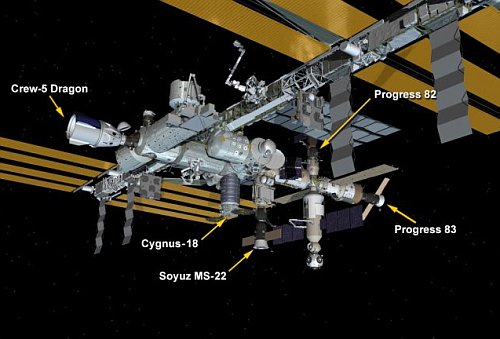China aiming to complete 80 launches in 2023
According to this Space.com article, China’s many pseudo-company rocket startups are hoping to complete a total of approximately 19 to 21 launches in 2023, which when combined with the 60-plus launches the government hopes to complete, will give China a total of approximately 80 launches in 2023, a new record.
The article provides a good review of all of the pseudo-companies hoping to launch in the next few years. This list includes the following:
- Galactic Energy: 8 to 10 launches in ’23 with its Ceres-1 solid fueled rocket
- Space Pioneer: The first launch of its liquid-fueled Tainlong-2 rocket
- Exspace: 7 launches with its Kuaizhou-1A and larger Kuaizhou-11, both solid-fueled
- Landspace: A second launch attempt of its liquid-fueled Zhuque-2 rocket after a launch failure in ’22
- Orienspace: The first launch of its Gravity-1 solid fueled rocket
- Rocket Pi: The first launch of its Darwin-1 liquid fueled rocket
- Ispace: Unknown after three consecutive launch failures of its Hyperbola-1 solid-fueled rocket
The article also adds launches from two government “private” spinoffs, CAS Space, planning 3 launches of its PR-1solid fueled rocket, and China Rocket, planning at least one launch of its Jielong-3 solid fueled rocket. Though both are touted as private, they are both really separate divisions created by China’s space agency CASC, with their launch counts likely included in the government’s hope-for 60 launches.
The pseudo private companies are somewhat more independent as they were founded by private individuals. All appear to have obtained private Chinese capital — in addition to government funding — to fund their development. All however are also entirely supervised in all actions by the government. None could build anything without government approval, and all are depending on government rocket technology that can be withdrawn at any time. These pseudo companies don’t really own their rockets. Furthermore, while they are able to sell their products to other private entities, their market appears almost entirely confined to China.
According to this Space.com article, China’s many pseudo-company rocket startups are hoping to complete a total of approximately 19 to 21 launches in 2023, which when combined with the 60-plus launches the government hopes to complete, will give China a total of approximately 80 launches in 2023, a new record.
The article provides a good review of all of the pseudo-companies hoping to launch in the next few years. This list includes the following:
- Galactic Energy: 8 to 10 launches in ’23 with its Ceres-1 solid fueled rocket
- Space Pioneer: The first launch of its liquid-fueled Tainlong-2 rocket
- Exspace: 7 launches with its Kuaizhou-1A and larger Kuaizhou-11, both solid-fueled
- Landspace: A second launch attempt of its liquid-fueled Zhuque-2 rocket after a launch failure in ’22
- Orienspace: The first launch of its Gravity-1 solid fueled rocket
- Rocket Pi: The first launch of its Darwin-1 liquid fueled rocket
- Ispace: Unknown after three consecutive launch failures of its Hyperbola-1 solid-fueled rocket
The article also adds launches from two government “private” spinoffs, CAS Space, planning 3 launches of its PR-1solid fueled rocket, and China Rocket, planning at least one launch of its Jielong-3 solid fueled rocket. Though both are touted as private, they are both really separate divisions created by China’s space agency CASC, with their launch counts likely included in the government’s hope-for 60 launches.
The pseudo private companies are somewhat more independent as they were founded by private individuals. All appear to have obtained private Chinese capital — in addition to government funding — to fund their development. All however are also entirely supervised in all actions by the government. None could build anything without government approval, and all are depending on government rocket technology that can be withdrawn at any time. These pseudo companies don’t really own their rockets. Furthermore, while they are able to sell their products to other private entities, their market appears almost entirely confined to China.













